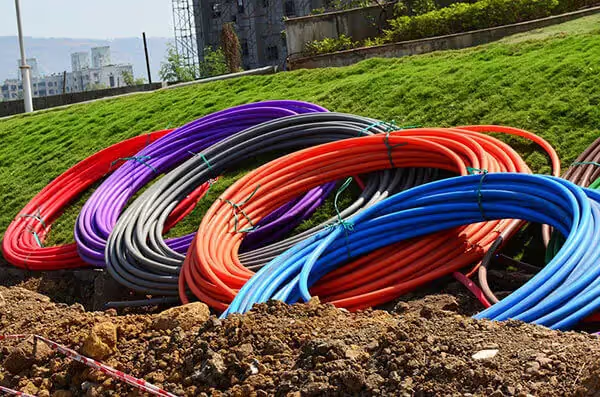Fiber optics growth & subsurface mapping
Written by

Published on
March 19, 2021


Table of contents
The fact that our world has become heavily reliant on high-speed internet is not news to anyone - from sophisticated smartphones and connected home appliances, entire industries are plugged into the digital highway.
To sustain this massive demand the world is turning to fiber optic cables, the fastest spreading cable communications infrastructure since the telephone.
The global fiber optics market was valued at US$ 6.81 billion in 2019 and is expected to reach a whopping US$ 10 billion by 2027.
Major growth drivers for this market are ever increasing demand for the internet and growing use of wireless communication systems.
For example, although China was the largest contributor to the Asia Pacific fiber optics market in the year 2019, India has registered high growth rates due to rapid penetration of IoT and smart devices. This expansion does not happen in a vacuum as it requires government cooperation and investment, like in Argentina where during 2020 the national government committed to invest over $ 594 million in the development and installation of 187 kilometers of new fiber optics cable, growing the existing infrastructure by 30%.
Why does it matter? Because fiber optics live underground.
Every single kilometer of cable involves preparation and installation in the subsurface space, posing unique challenges to stakeholders involved. As demand for fiber optic cable is only set to increase, companies operating in the field are aiming to improve their process in order to meet the demand faster than the competition.
Such a solution is 4Map, the smart subsurface mapping platform that produces highly accurate and detailed digital copies of the subsurface within a given area.
By combining cutting-edge AI and computer vision together with satellite imaging the system uses sophisticated algorithms applied to aerial images and satellite data to produce computer-generated mapping of existing subsurface structures and utilities.
With hundreds of kilometers of new fiber optic cable buried underground each year, it is easy to see how companies operating in this segment will be eager to streamline their efforts by turning to technological innovation such as 4Map.
One great advantage of the platform is in improving the quality and availability of information on existing subsurface infrastructure, but most importantly it can save time. Minimizing the survey stages to mere weeks can be crucial to communications and infrastructure companies which sometimes spend months preparing utility mappings, underground surveys and locating forgotten subsurface structures.
Moreover, having an accurate, current map of the subsurface helps in reducing costs and delays caused by changes to project planning as well as execution.
This is no small matter as budget overruns and work accidents are serious problems that cost more than time or money. Even the biggest underground cable development projects can be brought to a halt if an excavator crew accidentally hits a waterline, or if a gas pipe is found within the planned route for the cable. It will be very interesting to see how these challenges are met by the industry and how fast it will be to adopt innovative solutions such as 4Map and apply them to the challenges it currently faces.
Recent blog posts

Our Newsletter
Join 7k infrastructure professionals
Get monthly insights on ways to build smarter, faster and safer with Utility AI.

.avif)




